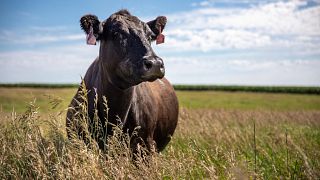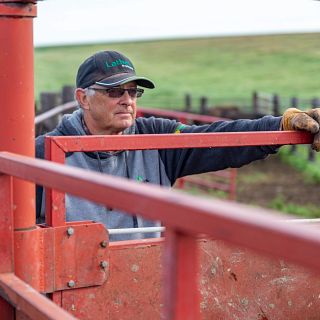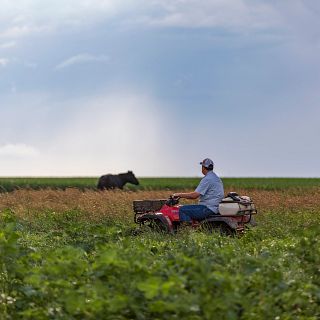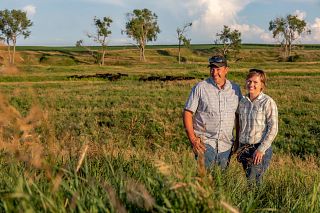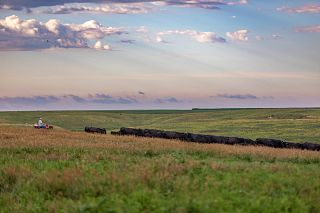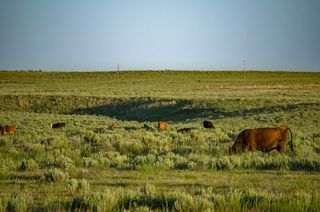
- Home
- Winner Gallery
- Inductees
- Johnson Farms

Year Inducted: 2020
Region VII
Frankfort, SD
South Dakota Farms for outstanding environmental stewardship
Johnson Farms of Frankfort, S.D. is operated by Alan Johnson and his wife, Mickie, along with their son Brian and his wife, Jamie. This family farm is focused on regenerative agriculture. A love of the land drives the conservation-first decisions, whether it is in the pastures or on the cropland. Ask any one of the Johnson family and they will explain that dedication to soil health through holistic management optimizes the resources entrusted to their hands and is key to their way of life. The farm was established more than 100 years ago when Alan Johnson's grandfather, John Johnson, homesteaded in Spink County after immigrating from Sweden. The operation includes 1,800 acres of cropland, consisting of corn, soybeans, small grains and cover crops, and 500 acres of grass, 80% of which is native grassland, where the family raises registered Angus cattle.
"I hope we do enough to make a difference and become a positive example for others."
The road to increased sustainability began 34 years ago when Johnson decided to convert his operation to no-till, surprising other area farmers because it was a new approach at that time. He recognized that tillage passes made to rid the fields of weeds also depleted the soil of much needed moisture. Johnson’s decision to practice no till farming helped conserve vital moisture and gain nutrients. "I think what has been done historically to native grasslands is more impactful on the future than anything in the past,” Johnson said. “Tearing up pastures to plant corn has created problems with the natural use of the land, resulting in salinity issues that must be addressed, not just for our kids but for the multitude of generations to come. I hope we do enough to make a difference and become a positive example for others." The Johnsons have found an outstanding synergy with the cattle and the cover crops. Wherever possible, they allow the cattle to graze the mature cover crops, providing excellent fall-season feed. The hoof action spreads and incorporates the manure, further enhancing the cooperative relationship between the cattle and the land. The same system takes place on their corn stalks, where the cattle graze after the fall harvest. Grazing the stubble and cover crops builds the soil microbes, and the manure and urine is the catalyst that encourages the regeneration process to work much faster. "I love that we do it together as a family. We all want to be here raising cattle, producing healthy crops and working together. No matter the season, there's always something to look forward to,” Johnson said.
